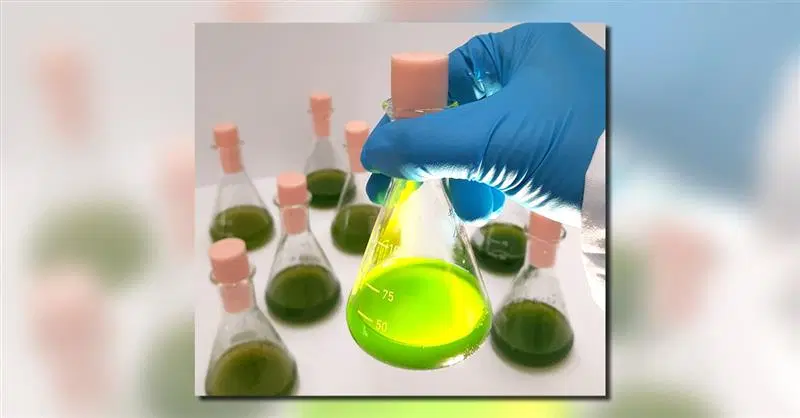Reviewed by Lexie CornerMay 14 2025
A team of biophysicists led by Prof. Dr. Oliver Bäumchen and Dr. Maike Lorenz has developed a detailed protocol for the reliable cultivation of the unicellular green alga Chlamydomonas reinhardtii.
The guide supports researchers worldwide who study biological, biophysical, and biotechnological systems across biophysics, bioengineering, and life sciences. Its cultivation protocols are detailed in the journal Nature Protocols.
 Liquid cultures of the microscopic green alga Chlamydomonas reinhardtii in the laboratory. Image Credit: Rodrigo Catalan
Liquid cultures of the microscopic green alga Chlamydomonas reinhardtii in the laboratory. Image Credit: Rodrigo Catalan
Chlamydomonas reinhardtii is a light-sensitive green alga whose use has expanded beyond the life sciences to fields such as biophysics, statistical physics, fluid dynamics, and bioengineering.
While some aspects of its cultivation follow standard microbiological techniques, the alga’s sensitivity to light and motility require tailored protocols. Unlike many other model organisms, C. reinhardtii must be maintained under not only controlled temperature and atmospheric conditions but also a lighting environment that supports its circadian rhythm.
Thanks to our many years of experience, colleagues from around the world frequently reach out to us with problems and questions regarding their cell cultivation. This encouraged us to document our expertise in a detailed and accessible way, and to make it available to the scientific community in the form of a comprehensive methods manual.
Dr. Oliver Bäumchen, Professor and Chair, Experimental Physics V, University of Bayreuth
Successful cultivation is confirmed through detailed characterization of cell shape, population growth, and cell motility. To achieve this, the researchers use microscopy combined with custom-developed, computer-based image analysis tools.
Alongside the step-by-step cultivation protocol, the team has made their algorithms and source code publicly available as open-source software. The protocol also includes troubleshooting sections that identify common problems and likely sources of error, offering practical guidance for resolving these issues in the lab.
The Culture Collection of Algae at Göttingen University provides its living strains for research, teaching, and biotechnology worldwide. Our Chlamydomonas strains are particularly in demand. In this new, very detailed guide, we have compiled our extensive knowledge on how to cultivate them. With it, we particularly support researchers who are working with this fascinating model organism for the first time.
Dr. Maike Lorenz, Department of Experimental Phycology and Culture Collection of Algae, University of Göttingen
Lastly, the methods paper features a list of related microorganisms and genetically modified strains that can also be effectively cultivated and analyzed using the described techniques.
Source:
Journal reference:
Catalan, R. E., et al. (2025) Preparation, maintenance, and propagation of synchronous cultures of photoactive Chlamydomonas cells. Nature Protocols. doi.org/10.1038/s41596-024-01135-3.